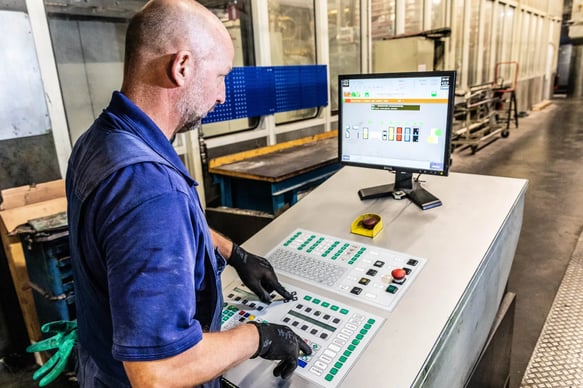Senefelder Misset
Senefelder Misset Streamlines Processes to Open Up New Growth Opportunities
Discover how Senefelder Misset transformed its operations by leveraging advanced print management systems.

"We very much wanted to standardize and consolidate all functionalities into one, single system."
Emile Schilders, Business and Information Analyst
Senefelder Misset
About the company
Senefelder Misset is a go-to full-service graphical service provider. The company has 200 employees and welcomes an additional 25 temporary employees a month on average. Their annual turnover is around 40 million Euros.
Senefelder Misset began as a small commercial printing company, founded in 1873 by then-24-year-old Cornelis Misset. Located in the eastern Netherlands town of Doetinchem, the company started using their first high-pressure rotary press in 1899, becoming a public limited company a few years later. Known today as Senefelder Misset, the company is one of Europe’s leading magazine printers.
Senefelder Misset prints both web offset and sheet offset, producing magazines, travel brochures, catalogs, covers, RSVP cards, and other products on their sheet-fed offset presses. Serving well-known customers such as Fortune, New Skool Media, DPG Media, and TIME magazine, the company has expanded their capabilities, adding 5,500m2 of extra space to their plant surface to facilitate a finishing department.
The challenge
Until 2020, the company relied on a variety of specialized software applications that, while able to communicate through interfaces, lacked true integration.
Emile explains: “We used systems like Dims, QTMS, and PSS, connected via interfaces. However, we recognized that full integration would deliver greater operational benefits. That’s why we made the decision to replace these systems and move to a single, fully integrated solution.”
Key requirements
The solution
Without the ability to integrate the multitude of specialized software applications used in its production processes, Senefelder Misset was missing out on key operational optimization. They chose to migrate to Publication Print Suite, a single integrated system that has resulted in greater benefits for overall operations.
A single integrated system – like the Publication Print Suite, featuring Technique at its core – delivers more advantages because there are no barriers between the modules. A benefit to this is minimization of the overall number of interfaces required, resulting in much lower maintenance costs.
“The main reason for the switch was that we very much wanted to standardise and consolidate all functionalities into one, single system,” says Schilders. Additionally, when the company was informed that one of their applications would be no longer updated, it solified their decision to move to a suite solution.

Enhanced Visibility and Control
The Technique solution facilitates the collection and integration of companywide information in the office or the production floor for automated, efficient, and profitable business management.
“We use Technique because it allows us to work with a single ERP application across the company,” states Schilders.

"Technique allows us to monitor, control and adjust processes in real-time when needed… It makes workflows much simpler, without human intervention, avoiding human errors."
Emile Schilders, Business and Information Analyst
Senefelder Misset
The results
In addition to workflow simplification and real-time monitoring, Technique also allows Senefelder Misset to work with consistent data and information across the entire company.
This prevents accidental data duplication, an issue with the previous configuration. Other advantages include company-wide standard documentation that all teams can work with, as well as the ability to monitor, control, and adjust processes in real-time.
A considerable advantage of Technique is that the SQL Reporting Service is integrated. This integration makes it extremely simple to create reports for collaborators and users. Users can also schedule these reports to be sent at specific times.
“For example, by default, we send out a report with the KPI’s (Key Performance Indicators) of the production over the past 24 hours each morning right after the morning shift,” explains Schilders.
“Each week, a dashboard is sent covering paper and other supplies, tenders and quotes sent, etc.
“The system makes workflows much simpler, and it needs no intervention at all, which rules out human errors, which is another considerable advantage,” adds Schilders, and “Technique meets all our expectations. Actually, it exceeds them because we were also able to implement new developments.”
Another positive experience was that Technique team was open to cooperation related to Senefelder Misset’s integrated way of going through and working out their processes
“We were able to translate the results of that cooperation into software adjustments, so the system fits our needs perfectly,” says Schilders.
The Publication Print Suite has brought Senefelder Misset a better and more complete control over its workflow that, in turn, allowed them to shorten turnaround times, automate workflows and reduce costs, as well as improve efficiency, information and data streams.
"Technique meets all our expectations. Actually, it exceeds them because we were also able to implement new developments."
Emile Schilders, Business and Information Analyst
Senefelder Misset
